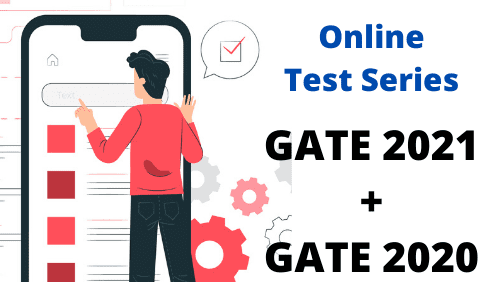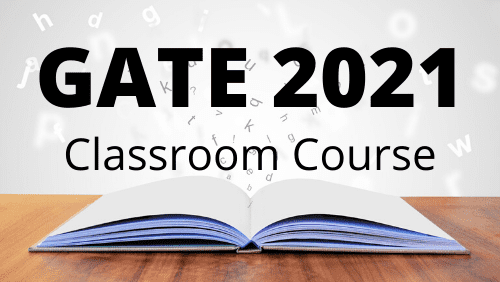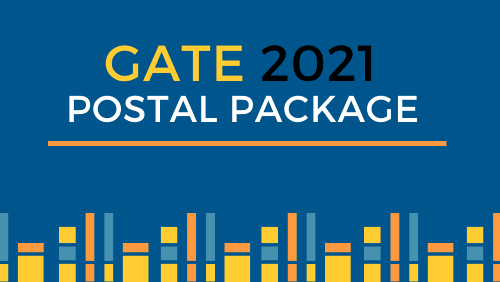Madhya Pradesh Public Service Commission (MPPSC) every year conducts exam for State Engineering Services for the recruitment for the post of Assistant Engineers. MPPSC AE exam is one of the most competitive exams out there where lakhs of students compete to get an opportunity to work as an Assistant Engineer in the State Engineering Services.
MPPSC has recently changed the pattern and selection procedure for the recruitment of Assistant Engineers in the State Engineering Services. The following information will guide you through all the necessary details.
MPPSC AE: New Selection Procedure
As per the new selection procedure laid out by Madhya Pradesh Public Service Commission, there will be no Mains Examination for the recruitment of Assistant Engineers in the State Engineering Services. The following PDF gives the detailed structure of the exam as published by MPPSC.
A brief summary of the Selection Procedure is as follows:
- The first stage of the recruitment will be an Online Examination
- Through this Online Exam, number of students selected for the Personal Interview shall be 3 times the number of vacancies
- To be eligible for getting selected for the next stage, the candidate has to secure a minimum of 40% marks in both the Sections A& B of the Online Exam. For candidates with reservation, the minimum requirement will be 30% in both the sections.
- The qualified students, from the first stage, will be required to submit documents to certify their eligibility. Those candidates who fail to produce valid documents will not be called for the Personal Interview.
- The final selection will be based on the total marks obtained in both stages of the recruitment.
MPPSC AE: Important Dates
- Date of Notification: To be announced Soon
- Date of Online Exam: To be announced Soon
- Admit Card Download: To be announced Soon
- Result of Written Exam: To be announced Soon
MPPSC AE: Exam Pattern
The distribution of the total marks for the recruitment is as follows:
| Online Exam | Total Marks | Duration |
|---|---|---|
| Section A: General Knowledge related to Madhya Pradesh, India and World | 150 | 3 Hours |
| Section B: Related Discipline (Engineering Stream) | 300 | |
| Total Marks | 450 | |
| Personal Interview | 50 | |
| Total Marks (Stage-1 + Stage-2) | 500 |
- Section A of Online Exam will comprise of questions based on General Knowledge of Madhya Pradesh (35 Questions), India (10 Questions) and World (5 Questions). Hence, there will be 50 questions.
- Section B of the Online Exam will have questions related to the Engineering Subject that you have chosen during the application. This section will have 150 questions.
- The questions will be of Multiple-Choice-Questions (MSQ) type. Each question will have 4 options and the candidate has to select the right answer.
- 3 Marks will be awarded for every right answer. 1 Mark will be deducted for every wrong answer submitted.
MPPSC AE Syllabus
The detailed syllabus for each section has been released on the official website of MPPSC. Click on the links given below to get the PDF of the detailed syllabus.
General Knowledge of Madhya Pradesh, National and International level
History culture and literature of M.P
- Important Historical events and Major dynasties of M.P.
- Contribution of Madhya Pradesh in the Independence movements.
- Art, Architecture and culture of M.P.
- Main Tribes and Dialects of M.P.
- Main festivals, folk music and folk art of M.P.
- Important literary figures of M.P. and their literature.
- Main Tourist places of M.P.
- Important personalities of M.P
Geography of the Madhya Pradesh
- Forest, Mountain and Rivers of M.P.
- Climate of M.P.
- Natural and mineral resources of M.P.
- Energy Resources: Conventional and Non- conventional.
- Main irrigation and Power projects of M.P.
Politics and Economy of M.P.
- Political system of M.P. (Governor, Cabinet, Legislative Assembly).
- Panchayati Raj in M.P.
- Social system of M.P.
- Demography and census of M.P.
- Economic development of M.P.
- Main industries of M.P.
- Agriculture and Agri based industries in M.P.
Current events of International, National and M.P.
- Important Contemporaneous events.
- Famous sports competitions; awards and sports institution of the State and country.
- Welfare schemes of M.P. state.
- Famous personalities and Places.
Information and Communication Technology
- Electronics, computers, information and communication technology.
- Robotics, artificial intelligence and cyber security.
- E- Governance.
- Internet and Social networking site.
- E- Commerce
1. Structural Analysis
Frames. Matrix Methods of analysis, Stiffness and Flexibility Matrices of Beams. Frames & Trusses, Elements of Plastic analysis.
2. Structural Design
(1) Steel Design
Factors of Safety and Load Factors. Riveted and Welded connections of Members, Design of Tension, Compression and Flexural members, built-up beams and Plate Girder Slab and Guesseted Bases for Columns, Design of Roof Trusses. Purling and Coverings, Structural Steel tubes and their connections Industrial and Multi-Storyed Buildings Water tank and supporting tower’s design. Plastic Design of Continuous Beams & Frames.
(2) R.C. Design
Working Stress and Limit State methods for design of Rectangular, T and L Beams, Slabs and Columns. Isolated and Combined footings, Raft Foundations. Overhead, resting on ground and Underground Water Tanks. Design of Bunkers and Silos. Methods and Systems of Prestressing, Anchorages. Losses in Prestress, Design of Prestressed Concrete Beams.
3 Construction Planning and Management
Detailed estimates, specifications, analysis and rates of various works in civil engineering. Construction activity , work break down structures , scheduling through CPM and PERT analysis , cost optimization through network construction, Float times, Bar charts , Project control and supervision , cost reduction measures, Cost analysis and resource allocation , Fundamentals of engineering economics , methods of appraisal , present work, annual costs , benefit cost analysis, Types of tenders and contract conditions .
4. Environmental Engineering
Water Demand – Per capita Demand, Population Estimation methods Water Quality Criteria for various uses viz. Domestic & Non-Domestic, Irrigation effects & significance of important parameters and permissible concentration as per relevant standards. Transmission of Water- relative merits & demerits of various pipes viz C.I. G.I. Mild Steel. A.C. Pressure Pipes. Corrosion of Pipes-types & Methods of control System of distribution & layouts of distribution. Unit Processes & Operations for Water Treatment viz, Objectives and Design criteria of Sedimentation, Coagulation, Flocculation, Chemical Sedimentation. Filtration ( slow sand & rapid sand), Disinfection, Softening. Quantity & Characterization of Domestic Sewage-significance of B.O.D., C.O.D., D.O. ,Solids. T.O.C. , N.O.D. Effluent Standards, River Standards. Sewage System-Design of Sewer & Storm Sewer, Sewage Pumps. Design of Screens, Grit Chamber. Design of Primary Sedimentation tank. Design of Biological Treatment Units viz Trickling filters, Activated Sludge Treatment and Secondary Sedimentation tank. Waste Stabilization Ponds- Aerobic, Anaerobic & Facultative Ponds, design criteria and principles. Sludge Treatment- Digestion & Sludge Disposal. Septic Tanks-design criteria & working Self Purification of Streams- oxygen sag curve. Types of Pollution-Sources & effects of various pollution viz., Water, Air, Land & Noise, Relevant standards. Rural Sanitation, Solid Waste- collection & disposal.
CIVIL ENGINEERING (CODE NO. 09)
PAPER - II
1. Water Resources Engineering
Water Resources in the Globe, Available Fresh Water. Need for Optimum use of Available water, Schemes for Drinking, Irrigation, Hydro Power, Multipurpose Schemes.
Irrigation - Necessity, Scope, Benefits & Effects. Methods & Systems of Irrigation, their efficiencies. Water Distribuion & Scheduling techniques. Crop Water Requirements, Evapotranspiration, Consumptive Use, Duty, Delta, Base Period their relation, Crop Rotation, Quality of Irrigation Water.
Hydrology -Hydrological Cycle, Precipitation – Types, Measurement, Raingauge Network, Analysis of Precipitation Data, Dependability Analysis, Unit Hydrograph, Summation & Synthetic Hydrographs, Design Flood by UH & Frequency Studies.
Ground Water -Class & Availability of Soil Moisture. Aquifers- Confined & Unconfined. Open & Tube Wells, Radial Flow in Wells,Depuit’s Theory. Darey’s Law, Seepage Analysis using Flow Nets. Yield of Wells, determination.
Storage Scheme -Reservoir Planning, Capacity, Yield, Life. Gravity & Earthen Dams. Forces Acing, Modes of Failure, Stability Criteria, Design. Galleries. Shafts. Joints in Gravity Dams. Foundation Treatment. Spillways, Types, Design of Ogee & Syphon Spillways. Energy Dissipating Devices, Design of Stilling Basins.
Diversion Schemes - Structures on Pervious Formations, Bligh’s & Khosla’s Theory, Hydraulic Jump, Design of Vertical Drop Weir & Barrage.
Distribution System - Canals – Classification, Layout, Alignment, Capacity, Design of Canals. Silt Theories, Canal Regulation Structures. Design of Head & Cross Regulators, Canal Falls, Cross Drainage Works, and Outlets, Escapes.
Water Logging -Causes, Effects, Remedial Measures, Losses in Canals, Canal Lining, Types. Advantages, Conjunctive use of Surface & Ground Water.
River Training -Objective & Methods, Concepts of Hydro Power Projects.
2. Transportation Engineering Railways
Permanent Way, Sleepers, Rail Fastenings, Ballast, Points and Crossings, different types of Turn Outs. Stations and Yards, Turn Tables, Signals and Interlocking, Level Crossing. Maintenance of Track, Super-elevation, Creep of Rails, Ruling Gradients, Track Resistance. Tractive Efforts, Curve Resistance .
Highways & Airports - Principles of Highway Planning, Highway Alignments. Geometrical design, Cross-section. Camber, Super-elevation. Horizontal and Vertical curves. Classification of Roads. Design and Construction of Flexible and Rigid pavements for Highway and Airfields. Evaluation of Pavement Failure and Strengthening, Drainage of Roads. Traffic Engineering : Traffic Surveys, Highway Capacity, Intersections, Rotary Design Elements, Signs, Signals and Markings. Selection of Airport Sites, Wind rose Diagram & Runway Orientation. Runway and Taxiway Geometric and Lighting.
Bridge Engineering -Selection of Site, Design Data collection, Hydraulic Design, Scour Depth for Bridge Foundation, Economic Span. Type of Road and Railway Bridges, Design Loads and Forces, Impact Factor, Indian Loading Standards. Super Structure & Sub Structure, Abutments, Piers, Wing Walls, Return Approaches.
3. Geotechnical Engineering
Index Properties of Soil, Classification of Soils. Clay Minerals. Capillary Water, Permeability, Factors Affecting Permeability, Lab and field methods. Permeability of stratified soil deposits. Seepage Pressure, Quick Sand Condition, Flow Net, its properties & uses. Stess distributioin in soils, Boussinesq’s theory. Newmark’s Chart. Consolidation and Settlement : Terzaghi’s theory, Consolidation test. Settlement computiation. Time Settlement cureve. Compaction tests & their significance, factors affecting compaction. Shear Strength Parameters, Shear Tests, Mohr Coulomb’s failure theory, Skempton’s Pore Pressure coefficients. Earth Pressure at rest, Active and Passive Pressures, Rankine’s and Coulomb’s theory. Bearing capacity, Terzaghi’s analysis, factors affecting Bearing Capacity, Plate Load Test.Stability of Slopes, Sweedish Slip Circle method and Bishop’s simplified method. Stability Number. Sub-surface exploration. Methods, sampling, SPT, DCPT and Static Cone Penetration Test, Electrical Resistivity and Seismic method. Essential features of Foundation , types, design criteria, Rafts. Pile Foundation, Types of Piles, Pile Capacity, Pile Load Test. Group Action. Static/Dynamic formulae. Elements of Machine Foundation, Natural frequency, Amplification and Resonance. Ground Improvement Techniques, Sand Drains, Soil Stabilization, Geotextiles.
MECHANICAL ENGINEERING (CODE NO. 11)
Engineering Mechanics and Mechanics of Solids
Simple Application of Equilibrium Equations, Equations of Motion; Simple Harmonic Motion; Work, Power and Energy. Stress and Strain Relationship and Elastic Constants; Thermal Stresses; Shear Force and Bending Moment Diagrams of Simple Beams, Bending of Beam and Torsion of Shaft; Rankine and Euler’s Formula for Column; Thin walled Cylinders. Mechanical Properties of Materials and Testing.
Theory of Machines
Kinematic Links, Pairs, Chains, Mechanism and Inversions, Degree of Freedom and Constraint Motion; Classification and Terminology of Gears, Gear Trains, Bearings, Clutches, Cams and Followers; Function of Flywheel and Governor; Balancing of Rotating Masses; Gyroscopic Action.
Design of Machine Elements
Properties and Structure of Engineering Materials; Heat Treatment; Design Concepts, Design for Static and Dynamic Loading, Factor of Safety; Theory of Failure; Fatigue Strength and SN Diagram; Design of parts subjected to simple stresses such as Keys, Pins, Cotters etc.
Production Engineering
Basic types of Metal Cutting Machine Tools and their Operations; Geometry of Single Point Cutting Tool; Cutting Tool Materials; Metal Forming Processes and Machines –Drawing, Rolling, Forging & Extrusion; Sand Casting – Pattern and Mould Design, Casting Defects & their Remedies; Joining Processes –Arc Welding, Resistance Welding, TIG & MIG Welding.
Production Management
Method & Time Study Process charts , Estimation of Standard Time; Motion Economy & Work Place Design; Manufacturing Cost Estimation; Break Even Analysis; Site Selection; Plant Layout & Material Handling; Job Shop & Mass Production – Scheduling, Dispatching & Routing.
Thermodynamics
Zeroth Law and Thermometry; Thermodynamic Equilibrium; Heat and Work; First and Second Laws of Thermodynamics; Carnot, Rankine, Otto and Diesel Cycles; Vapour Power Cycles.
Fluid Mechanics
Hydrostatics; Stability of Submerged and Floating Bodies; Continuity Equation; Rotational and Irrotational Flows; Bernoullis’ Theorem; Flow Measurement; Concept of Laminar and Turbulent Flows.
Heat Transfer, Refrigeration and Air Conditioning
One Dimensional Steady State Conduction through Composite Walls and Cylinders; Heat Transfer Co-efficient; Laws of Thermal Radiation; Air Refrigeration System; Vapour Compression Refrigeration System, Simple Saturated and Actual Cycles; Properties of Refrigerants; Use of Psychometric Chart; Psychometric Processes.
Energy Conversion
Compression Ignition and Spark Ignition Engines; Rating of SI and CI Engine Fuels; Reciprocating Air Compressors; Flow of Steam through Nozzles; Impulse and Reaction Steam Turbines; Layout of Steam Thermal Power Plants; Fluidized Combustion and Forced Circulation Boilers.
Computer Programming and Computer Aided Engineering
Computer Hardware and Software, Flow Charting, Principles of Object Oriented Programming; Features of Windows, Introduction of c++ programme.
- Circuit theory
- Electro Magnetic field Theory and Materials
- Measurement and Instrumentation
- Analog and Digital Electronics
- Power Electronics
- Signals and Systems
- Control System
- Microprocessors and Microcomputers
- Electromechanical energy Conversion
- Industrial Drives & Utilisation
- Power Systems Analysis and control
- Switch gear and protection
- Analog communication
- Digital communication
- Satellite Communication, Radar and T
- Microwaves & Antenna
- Fiber Optic Systems
- Fluid mechanics, Machinery and Theory of Machines
- Engineering Thermodynamics and Heat Transfer
- Mathematics
- Elements of Electronics and Electrical Engineering
- Thermal power plants
- Diesel, Gas turbine and Combined cycle power plant
- Hydro power plants
- Nuclear power plant
- Power from renewable energy
- Energy, Economics and Environmental issues of power plants
- Engineering Mathematics
- General Engineering
- Engineering Metallurgy
- Manufacturing Processes I
- Manufacturing Processes II
- Advanced Manufacturing
- Metrology
- Quality and Reliability
- Operations research
- Industrial Engineering and Operations management
- Engineering Mathematics
- Thermodynamics, Rate and Kinetic of processes
- Extractive and Process Metallurgy
- Physical Metallurgy
- Mechanical Metallurgy
- Manufacturing Processes
- Characterization techniques
- Structure of Materials
- Properties Materials
- Elements of Quantum mechanics and Statistical Mechanics
- Introduction to IC Engines
- Fuels and Combustion
- Engine Lubricating and Cooling
- Engine Testing and Performance
- Engine Exhaust Emission and its control
- Chassis and Transmission
- Braking, Suspension and Steering
- Vehicle Dynamics
- Automotive Electrical and Electronic Systems
- Automotive Maintenance and Safety
- Physical Electronics, Electron Devices and ICS
- Signals and Systems
- Network Theory
- Electromagnetic Theory
- Electronic Measurement and Instrumentation
- Analog Electronic Circuits
- Digital Electronic Circuits
- Control Systems
- Communication Systems
- Microwave Engineering
- Computer Engineering
- Computer Architecture, Organization, Parallel & Distributed Computing
- Computer Programming, Data Structures & Object Oriented Analysis and Design
- System Programming and Operating Systems
- Numerical Computation, Algorithm Design and Complexity of Computing
- Theoretical Foundations of Computing
- Artificial Intelligence and Neural Networks
- Data Base and Information System
- Computer Networks and Web Engineering
- Computer Graphics & C.A.D.
- Software Engineering and Project Management
You can visit official website http://www.mppsc.nic.in or below information is shared here to go on direct download page.
| Exam Name | Links to Download Previous Year Papers |
|---|---|
| Civil Engineering Paper-1 | Click here to download |
| Civil Engineering Paper-2 | Click here to download |
| Mechanical Engineering Paper-1 | Click here to download |
| Mechanical Engineering Paper-2 | Click here to download |
| Electrical Engineering Paper-1 | Click here to download |
| Electrical Engineering Paper-2 | Click here to download |
MPPSC AE Previous Year Cut-Off: 2016
| Category | Sex | Minimum Cut-Off Marks | ||
|---|---|---|---|---|
| Civil Engineering | Mechanical | Electrical | ||
| UR | Male + Female | 277 | 308 | 341 |
| Female | 194 | 293 | 258 | |
| SC | Male + Female | 206 | 260 | 290 |
| Female | 145 | NA | 188 | |
| ST | Male + Female | 147 | 225 | 207 |
| Female | 148 | NA | 151 | |
| OBC | Male + Female | 247 | 294 | 333 |
| Female | 150 | NA | 178 | |
MPPSC AE Previous Year Cut-Off: 2014
| Category | Sex | Minimum Cut-Off Marks | ||
|---|---|---|---|---|
| Civil Engineering | Mechanical | Electrical | ||
| UR | Male + Female | 287 | 310 | 323 |
| Female | 200 | 249 | 291 | |
| ST | Male + Female | 163 | 242 | 269 |
| Female | 163 | 203 | 188 | |
| SC | Male + Female | 200 | 291 | 266 |
| Female | 155 | 200 | 230 | |
| OBC | Male + Female | 225 | 291 | 278 |
| Female | 158 | NA | 272 | |










